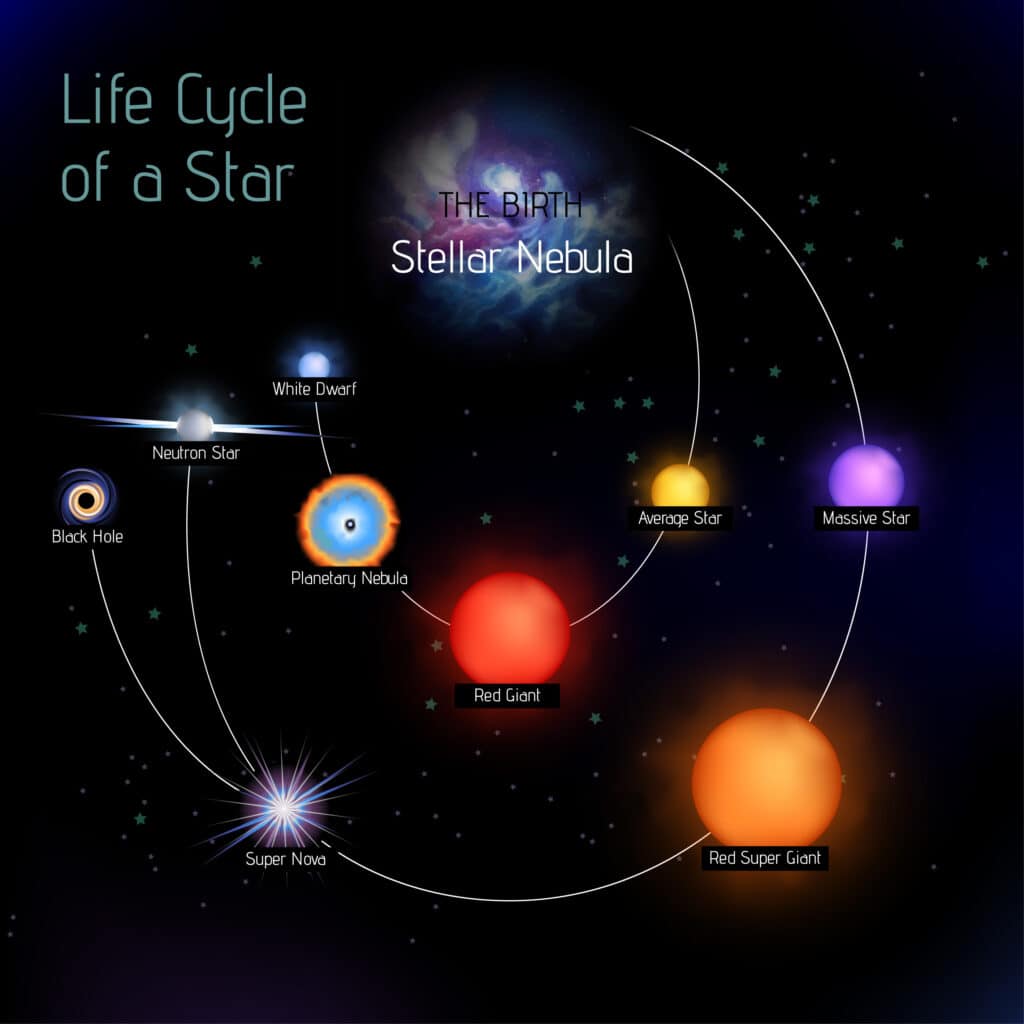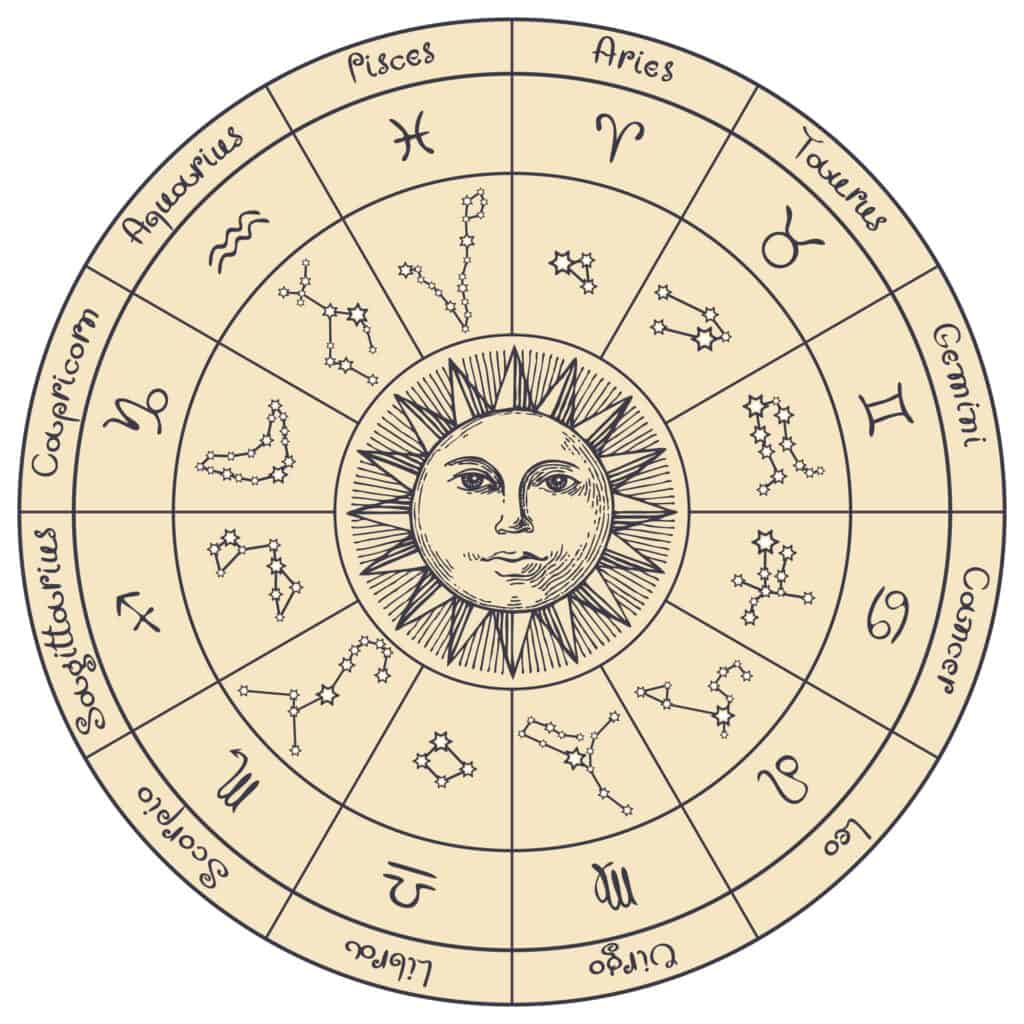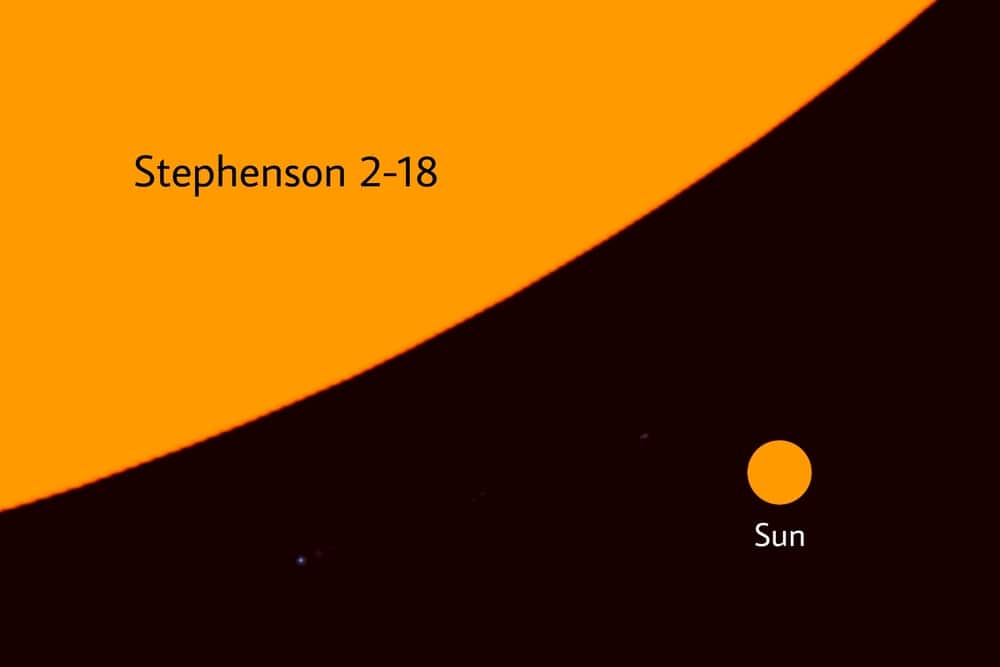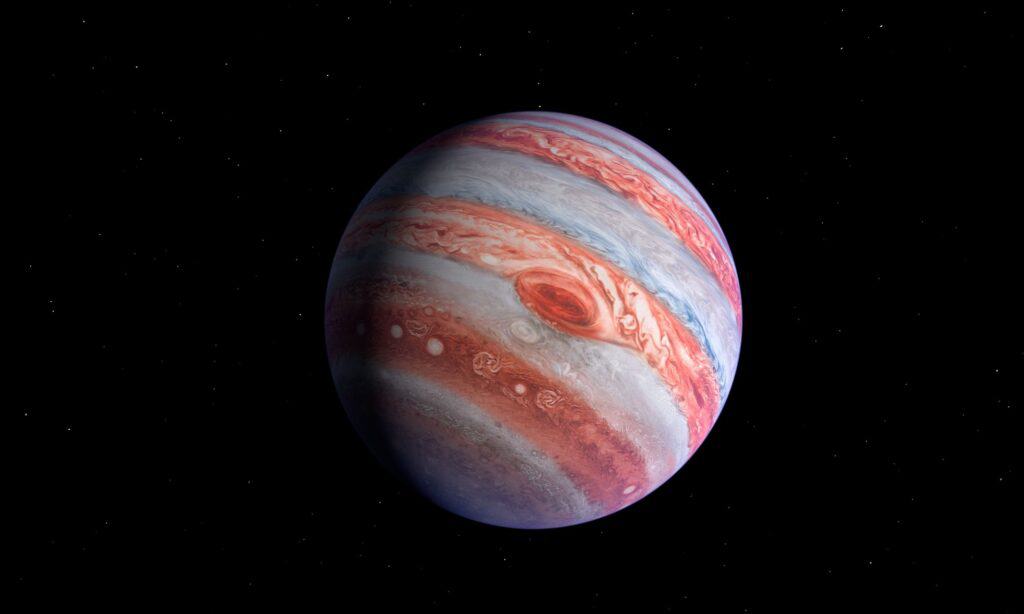Stars provide warmth and light during the day, and they twinkle in the night sky. The light from the Sun allows animals and plants to thrive on Earth too. Although the stars, including the one at the center of the Solar System, may appear small from our limited vantage point, that’s not the case. Stars are immense. Today, we’re going to look at the largest star in the known universe, show you where it is located, and how it compares to Sol, the name sometimes given to the sun in the Solar System.
What is a Star?

The Sun is a star that is far bigger than any planet in the Solar System
©iStock.com/Niklas Juritsch
Before we get into the discussion of the largest star in the known universe, we must define a star. A star is a celestial object that is massive, luminous, and composed of burning gas that shines with radiation derived from internal reactions. Stars are mostly made of hydrogen and helium, but they can contain other elements as well.
Stars are incredibly numerous throughout the universe, too. Carl Sagan once said that “Meanwhile the Cosmos is rich beyond measure: the total number of stars in the universe is greater than all the grains of sand on all the beaches of the planet Earth.”
Modern estimates say that the number of stars in the observable universe is probably between 1022 or more. From our perspective here on Earth, we only see pinpoints of various colors of light. Of course, the stars are much larger.
The Life Cycle of Stars

Stars begin as a cloud of gas and dust.
©Marusya Chaika/Shutterstock.com
Stars do not remain the same size throughout their lifespans. They have a life cycle like anything else, and their size is greatly dependent upon their stage of life. Let’s take a quick look at a star’s life cycle. That way, you have some context when we’re talking about star size.
All stars begin as a stellar nebula, a cloud of gas and dust. Over millions of years, gravity acts upon this stellar nebula to form protostars These protostars are pre-main-sequence stars, and the amount of mass they gather determines their life cycle.
Brown dwarfs form if a protostar is not able to get sufficient mass and reach the temperature for the nuclear fusion of hydrogen to commence. This is called a sub-stellar object.
Stars that do get massive enough to enter nuclear fusion are called main sequence stars. Smaller stars about the size of our Sun will have a lifespan of billions of years until they run out of hydrogen. The stars will collapse into smaller stars and increase in temperature. These stars then expand and become red giants, a process that can take hundreds of millions of years.
When our sun becomes a red giant, it will grow so large as to engulf Mercury, Venus, and Earth. These stars then collapse and become a white dwarf and then eventually becomes a black dwarf, no longer producing heat.
Massive main sequence stars run out of hydrogen much faster than small stars. Then they expand to become super red giants. These eventually collapse when fusion ends, and it creates a massive explosion called a supernova. These can become neutron stars or black holes.
As you can see, the life cycle of a star is complex and can lead to many different sizes.
How Big is the Sun in our Solar System?

The Sun is 109 times wider than the Earth
© paseven/Shutterstock.com
The Sun in our solar system has a diameter of 865,370 miles. This is a main sequence dwarf star. It will run out of hydrogen in another 5 billion years or so, and then it will become a red giant over time. The Earth has a diameter of 7,917 miles. In other words, the Sun is about 109 times wider than the Earth.
Of course, this size will change in the future as the sun turns into a red giant.
What is the Largest Star in the Known Universe?

Stephenson 2-18 is a red supergiant.
©Ahmed92pk/Shutterstock.com
The largest star in the known universe is called Stephenson 2-18, a star that has a radius 2,150 times that of the sun. That is 930,000,000 miles in size or roughly 10 billion times the volume of the Sun. The Sun is incredibly small compared to this star, and the Earth is basically a speck of dust compared to this star.
However, a great deal of controversy exists regarding the size of this star. Due to its proximity to a cluster of other massive red supergiant stars and other factors, it’s hard to get a good measure of this star. In fact, the star might not be as large as the second-largest star in the universe.
If the Stephenson 2-18 is not as largest, then the largest star in the known universe is called UY Scuti. This star has a radius that is roughly 1,708 radii of the sun. There is a margin of error of almost 200 radii of the sun, so it could be larger than the Stephenson 2-18 outright.
How Far Away is the Largest Star in the Known Universe?
The Stephenson 2-18 is roughly 19.000 light-years away from the Earth. It is located in the Scutum-Centaurus Arm in the Milky Way, so it’s in the same galaxy as the Earth. An interesting thing to consider is our perspective on the observable universe.
Since our view of the many stars of the universe is obscured, we can only speculate about the maximum size of stars. We probably do not know the largest star in the universe.
How Does the Largest Planet Measure up to the Largest Star in the Known Universe?

The largest planet ever found is over 2 times the size of Jupiter
©joshimerbin/Shutterstock.com
The largest planet in the known universe is ROXs 42Bb, a planet that is 2.5 times the size of Jupiter. Even at that massive size, this planet is still much, much smaller than both the Sun and Stephenson 2-18.
We have only just begun to discover the largest stars in the universe. Scientists have some theories about the upper limits of star sizes. However, those theories could require some editing in the future. For now, Stephenson 2-18 will remain at the top of our list of the largest stars in the known universe.
The photo featured at the top of this post is © Ahmed92pk/Shutterstock.com
Thank you for reading! Have some feedback for us? Contact the AZ Animals editorial team.






